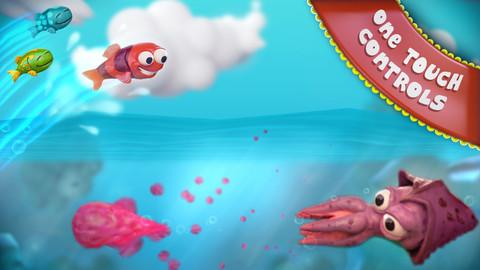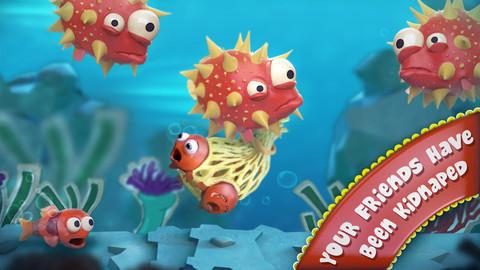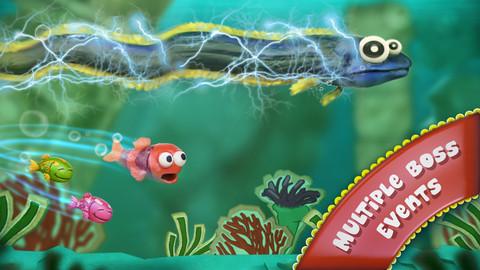- Wondering how to get Monopoly GO! free rolls? Well, you’ve come to the right place. In this guide, we provide you with a bunch of tips and tricks to get some free rolls for the hit new mobile game. We’ll …
Best Roblox Horror Games to Play Right Now – Updated Weekly
By Adele Wilson
Our Best Roblox Horror Games guide features the scariest and most creative experiences to play right now on the platform!The BEST Roblox Games of The Week – Games You Need To Play!
By Sho Roberts
Our feature shares our pick for the Best Roblox Games of the week! With our feature, we guarantee you'll find something new to play!Type Soul Clan Rarity Guide – All Legendary And Common Clans Listed!
By Nathan Ball
Wondering what your odds of rolling a particular Clan are? Wonder no more, with my handy Type Soul Clan Rarity guide.
Fin Friends Review
There seems to be a focus on kidnapping in games this month: bunnies kidnapped for science, spiders nabbing women, and even squares making off with circles. Claybox is diving into this thematic pool with Fin Friends, an endless swimmer that sends our finned hero, Ruby, on a rescue mission that has all the right hooks.

Out of respect for this amazing game, the review is limited to three fish puns total.
There seems to be a focus on kidnapping in games this month: bunnies kidnapped for science, spiders nabbing women, and even squares making off with circles. Claybox is diving into this thematic pool with Fin Friends, an endless swimmer that sends our finned hero, Ruby, on a rescue mission that has all the right hooks.
Ruby’s smaller fish friends have been captured by a crotchety gang of pufferfish. Much like the squares of Square Planet, these puffers seem to have no real reason for committing this felony and little interest in making their plan work, since they’ve dropped nets full of kidnapped fish throughout the ocean (even just a few meters from the scene of the crime). Determined to free his fish brethren, Ruby immediately sets out in pursuit, swimming through nets to free their captives and dodging spiky pufferfish and other dangerous creatures along the way.
As a gilled protagonist, Ruby’s abilities are limited to swimming up, diving down, and jumping slightly above water for a few seconds at a time. You’ll help him do each of these with a single finger: tapping causes Ruby to ascend toward the ocean’s surface, holding the screen will make him swim upwards faster, and letting go makes him descend until you tap again. If he’s swimming on the surface, Ruby will jump out of the water, and tapping again will give him a double jump boost.
Although he doesn’t come equipped with fish-rockets or advanced oceanic weaponry, Ruby makes excellent use of his nimble swimming abilities to dodge dangers and swim through the nets containing his pals. The single-touch control of Fin Friends is superbly executed, providing a gameplay experience that rewards knowledge and practice instead of random, obstacle-based luck. The ocean is large enough vertically that you can adopt different strategies on each playthrough: send Ruby skimming across the surface to take his chances with airborne balloon-pufferfish, let him glide along the ocean floor and pop up to dodge the occasional octopus wall, or a combination of the two (usually the best choice, but not always). Ruby is so responsive, and enemies’ hit detection so precise, that with enough practice you can zigzag your way through veritable minefields of fish without so much as a scratch.
That’s not to say Fin Friends is easy. Besides dodging deadly creatures scattered throughout the sea, Ruby will run into “boss” enemies as early as the middle of level two, and the beginning of each level thereafter. These bosses include an electric eel (or two) that takes up the length of the screen, a boatload of crabs that dive into the water for a pinch, and a giant squid who spits globs of acid (not ink, oddly) at Ruby repeatedly. If Ruby has saved any fish friends and they are swimming with him, he can survive being hit once—which will scatter his fish “shield” and leave him vulnerable to the next attack, until he saves more friends from nets.
Of course, these same rescued fish are worth bonus points if you bring them to the end of a level—signified by a safe zone containing a coral reef—and they will leave you for this safety before the next area begins. Because of this, level three is the “turning point” in terms of difficulty for Fin Friends: starting with level three, each area begins with a boss battle before you ever find a single net, meaning Ruby will need to make it past a significant portion of the level without getting hit once. This adds to the challenge and reward of practicing your movement and timing, but results in replaying the first—and very easy—level over and over again. With bonuses like the “boost” only appearing randomly within the levels themselves, and no purchasables outside of the game, there’s no way to skip ahead to the more challenging areas.
Despite this, I found myself much less annoyed while replaying Fin Friends‘ early levels than those of other runners—in fact, not annoyed at all. Objectives, like “pop 10 pufferfish balloons” or “swim on the surface for 40 seconds,” provide an extra challenge outside of making it past your last distance or high score, and also earn you higher multipliers for rescued fish—essentially guaranteeing greater scores as you progress, even if you’re having trouble passing certain levels. The entire game, from its gorgeous claymation graphics to its soothing sound effects and upbeat, catchy music, is an addictive treat to play. It’s rare to find a game in which you can die over and over in nearly the same spot, and yet never get frustrated, discouraged, or defeated. Ruby’s determined squint at the beginning of each run kept me going, and his huge grin after saving a group of fish put a smile on my face, too. Even the enemies that keep knocking him off are fun to encounter: the conjoined octopi who have gotten their legs tangled together, the bug-eyed eels that seem less hostile than confused, and especially the pufferfish—who are extra enjoyable because of their resemblance to Hector Salamanca—are all entertaining to swim past, around, and yes, even into to.
The fact that I don’t mind failing at this game is absolutely an endorsement, and Fin Friends has earned it wholeheartedly. It’s a feel-good title that plays wonderfully, and manages to be engaging and enduring without relying on any gimmicks. My Ruby will keep on swimming, and starting over, swimming, and starting over—and I’ll love every minute.

The good

The bad
More articles...
Monopoly GO! Free Rolls – Links For Free Dice
By Glen Fox
Wondering how to get Monopoly GO! free rolls? Well, you’ve come to the right place. In this guide, we provide you with a bunch of tips and tricks to get some free rolls for the hit new mobile game. We’ll …Best Roblox Horror Games to Play Right Now – Updated Weekly
By Adele Wilson
Our Best Roblox Horror Games guide features the scariest and most creative experiences to play right now on the platform!The BEST Roblox Games of The Week – Games You Need To Play!
By Sho Roberts
Our feature shares our pick for the Best Roblox Games of the week! With our feature, we guarantee you'll find something new to play!Type Soul Clan Rarity Guide – All Legendary And Common Clans Listed!
By Nathan Ball
Wondering what your odds of rolling a particular Clan are? Wonder no more, with my handy Type Soul Clan Rarity guide.








 “
“ “
“